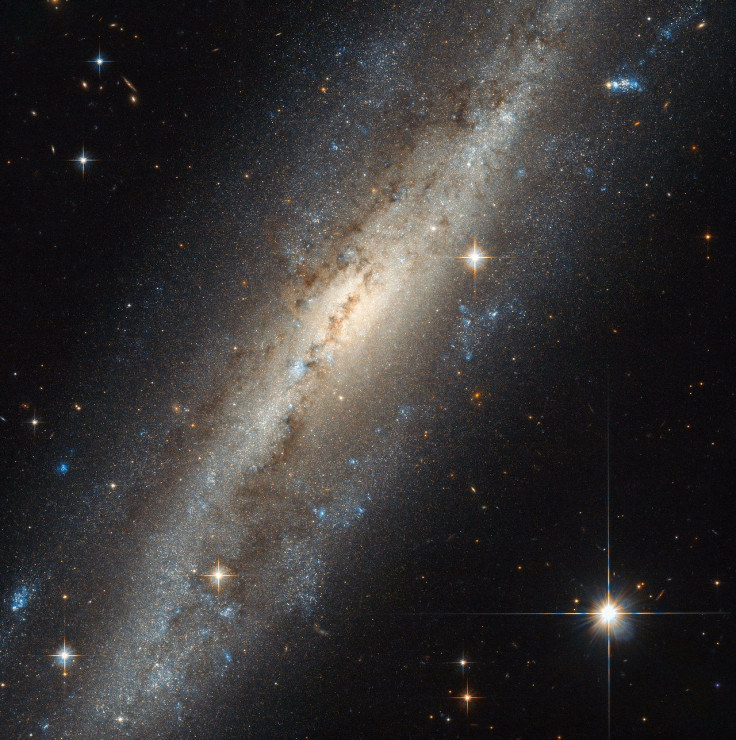Hubble Space Telescope Photographs NGC 7640, A Distant Barred Spiral Galaxy In The Andromeda Constellation

A team of astronomers using the Hubble Space Telescope has captured a stunning new image of the barred spiral galaxy NGC 7640. The shape of the galaxy, located over 19 million light-years from Earth in the Andromeda constellation, is similar to the Milky Way, but its diameter is just over half that of our home galaxy.
However, because of its orientation with respect to Earth, the Hubble image does not show the spiral arms of NGC 7640.
“There is evidence that NGC 7640 has experienced some kind of interaction in its past. Galaxies contain vast amounts of mass, and therefore affect one another via gravity,” the European Space Agency said in a statement accompanying the image. “Sometimes these interactions can be mild, and sometimes hugely dramatic, with two or more colliding and merging into a new, bigger galaxy.”
Galactic collisions can often give rise to structures that exhibit a dazzling variety of features. In November, for instance, a team of researchers using the Atacama Large Millimeter/submillimeter Array (ALMA) in Chile spied the end results of such a collision that took place 114 light-years from Earth.
This structure, which contained a star formation resembling a pair of eyelids, was created when a “tsunami” of stars and gas crashed through the disk of a spiral galaxy known as IC 2163 as it grazed past another spiral galaxy named NGC 2207.
More recently, in January, Hubble snapped a photograph of IRAS 14348-1447, a gas-rich irregular galaxy that astronomers believe was created when two spiral galaxies ventured too close, each getting caught in the other’s gravitational pull — an act of mutual destruction that ended in the galaxies' deaths, and the birth of a new one.
Scientists believe that understanding the nature of these interactions — which, in the cosmic scale of things, would be common occurrence — could shed light on the factors affecting the formation and evolution of galaxies and the stars within them.
© Copyright IBTimes 2025. All rights reserved.






















